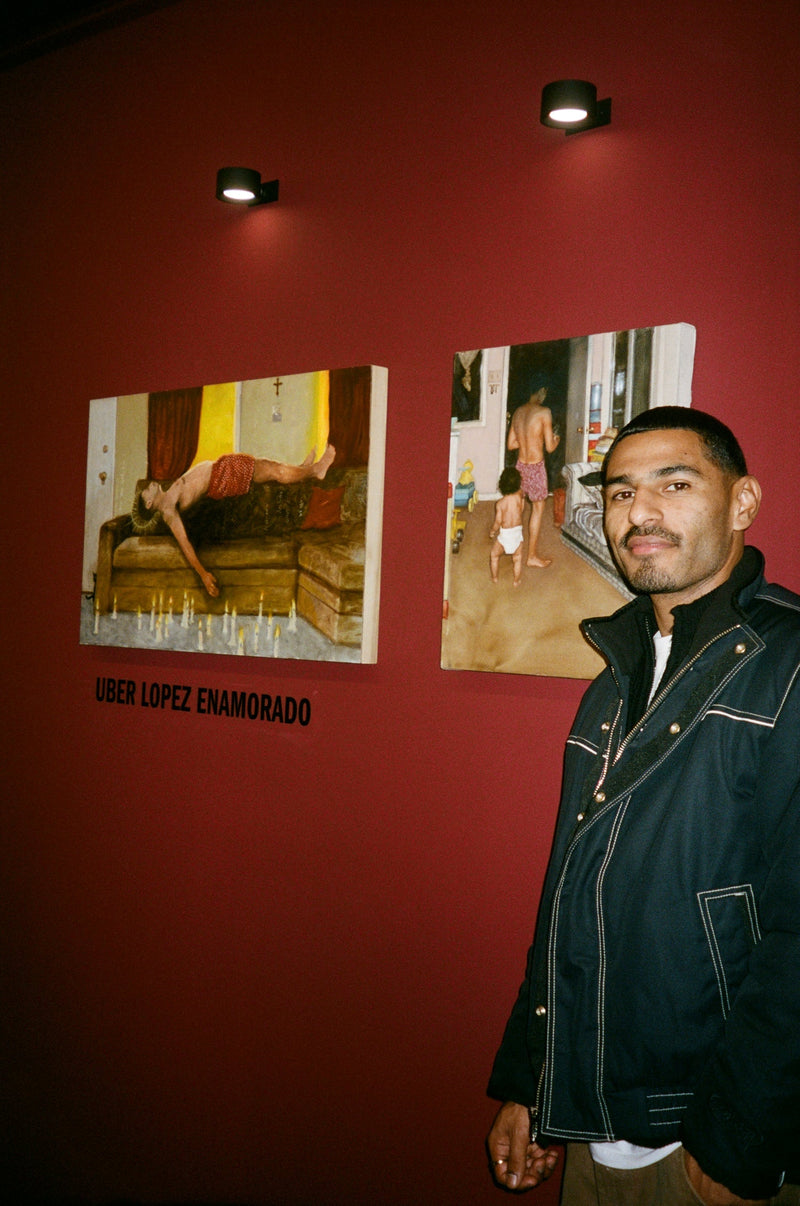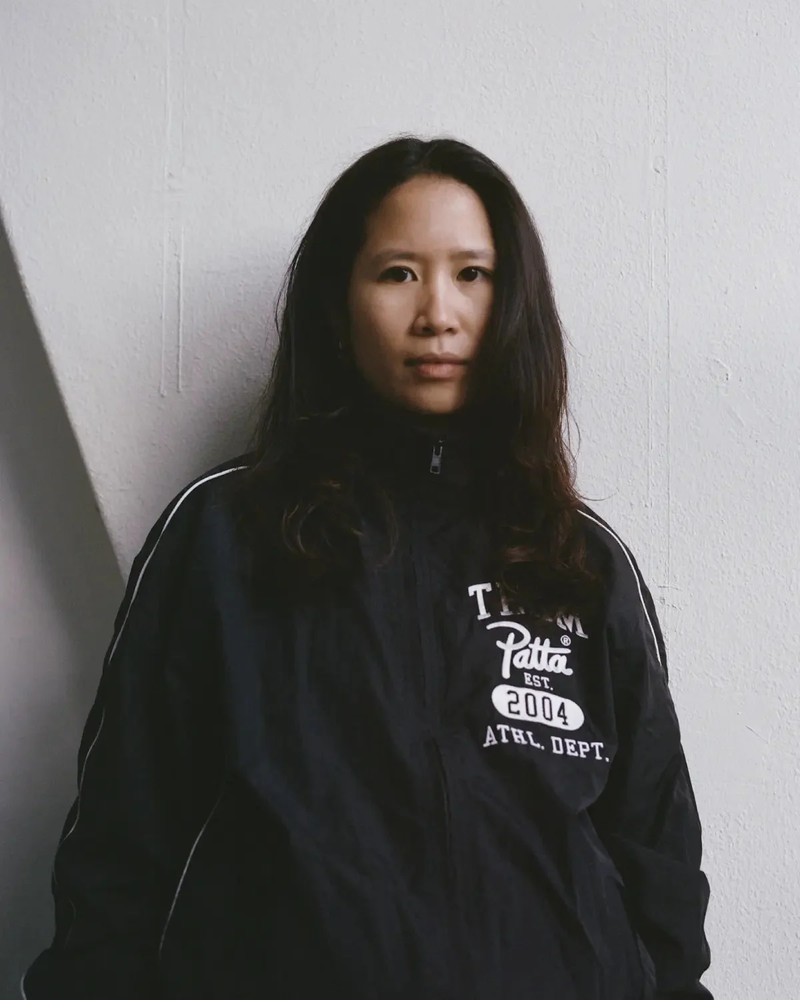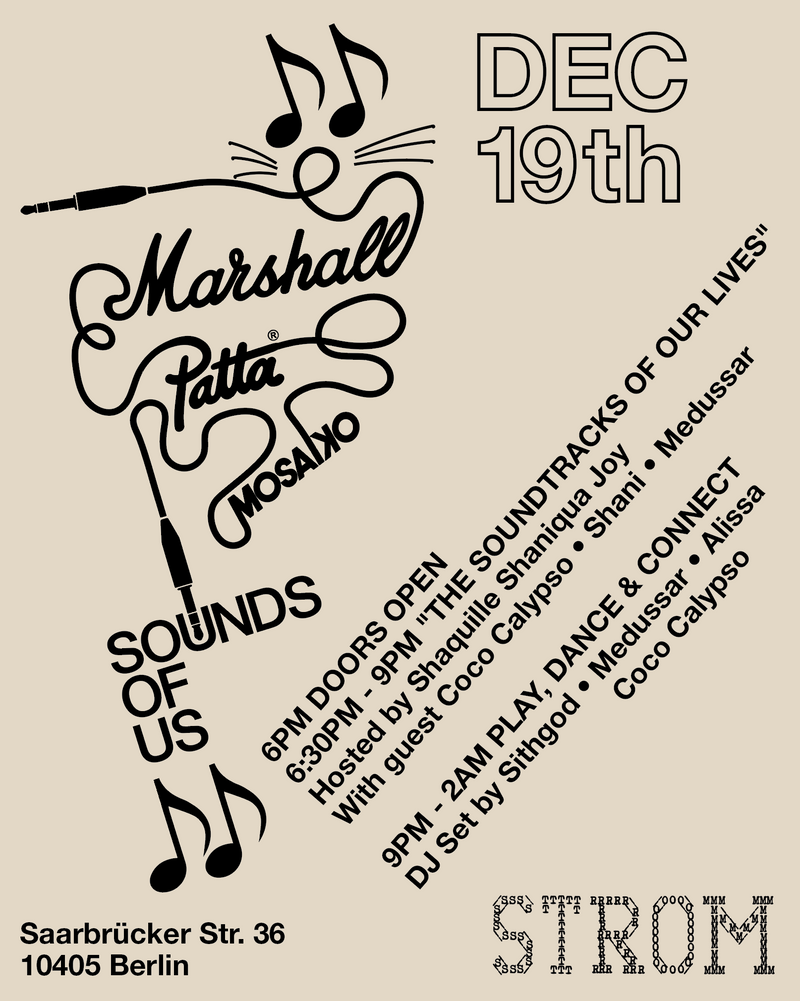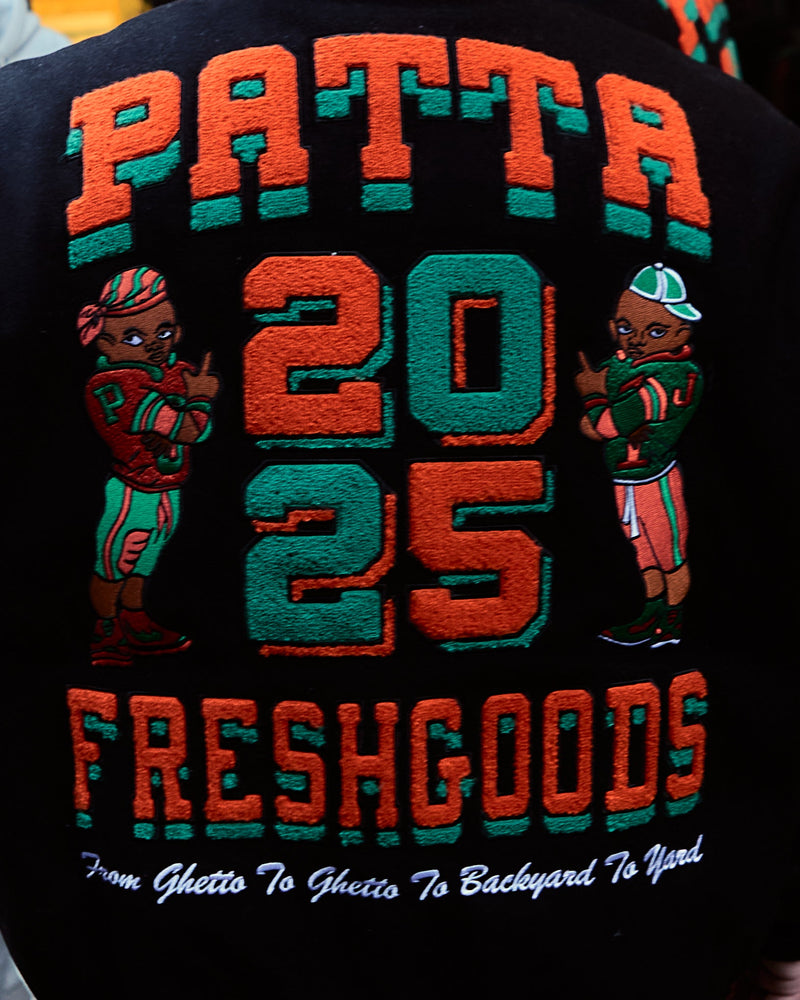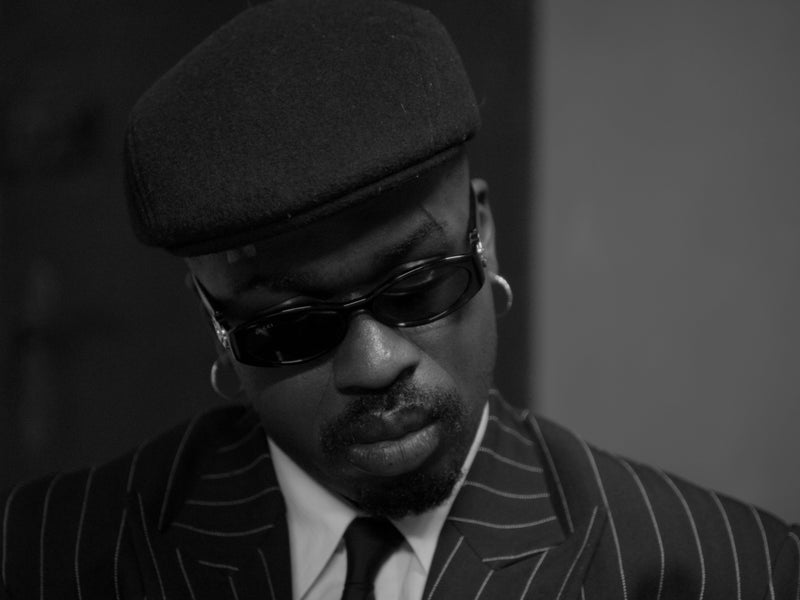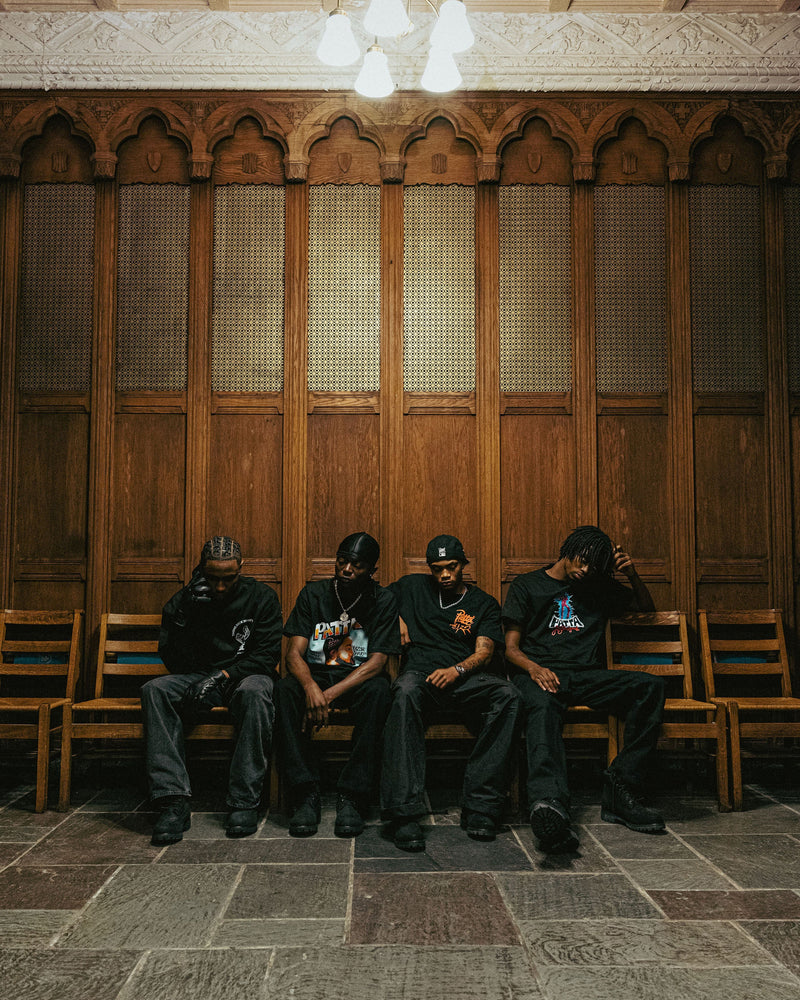Interview by Passion Dzenga | Photography by Ben DrameBefore Narco Polo was running up 101Barz, Range Rover freestyles and New Balance campaigns, he was a kid in a small town near Nijmegen, staring at a Dangerous-era Michael Jackson CD like it was a portal. From there it was hand-me-down Wu-Tang and 2Pac discs, scratched Green Day and Offspring albums, LimeWire folders full of East Coast, West Coast and French rap – the kind of informal education you only get from older brothers, neighbour kids and hours spent skating and playing video games with a Discman in your backpack.That DIY school of hip-hop still lives in his music today: soulful, underground and wordplay-heavy, somewhere between golden-era boom bap and the trap that later reshaped his taste. He taught himself to produce on cracked software in a student room, found his first audience freestyling in a Nijmegen sneaker shop, and built out a world with the Alle$ Lifestyle collective before moving to Amsterdam to take things further.Now, Narco Polo is one of the voices quietly reshaping Dutch rap from the inside – through jazz-flecked tapes with Styn, brutally honest car sessions filmed in his own Rover, and lyrics that read like pages from a private journal. Between four kids, two companies, meditation retreats, his own headline shows and support acts for International stars and Dutch OGs, he’s still obsessed with the same thing that grabbed him as a teenager: making music that feels real, lasts longer than the algorithm, and pushes Dutch hip-hop into a lane it hasn’t fully claimed yet.How did the first spark to get involved in music come to you?I grew up surrounded by CDs and a little home stereo. One day I found a Michael Jackson CD – I think it was Dangerous. The cover alone blew my mind, so I put it on… and then listened to that album every day after school for months.From there, my big brother was a huge influence. We were inline skating, doing stunts, and he’d always play Green Day, The Offspring – that kind of stuff. Later, he came home with a Wu-Tang CD and a 2Pac CD. That was my first real hip-hop experience. From then on, I never looked back. I even had the Wu-Tang logo on my wall, wore Wu-Tang clothes, bought the PlayStation game… I was deep in it.When LimeWire and torrents came in, it was over. I found this one Blogspot where hip-hop from all over the world was listed – East Coast, West Coast, UK, France, everything. I’d just download and dig. A friend’s older brother was also a hip-hop album collector, so whenever we were skating or gaming at his house, we’d be listening to CDs. That was my real “digging in the crates” era.Was that Michael Jackson CD from your brother or your parents?It was from my parents. My dad was a fan of George Michael and U2. My mother was more into Otis Redding, Marvin Gaye – she’s a soul fan. They had a lot of wedding and party classics. So I had tastemakers all around me: parents, brother, neighbourhood kids. Once I got on the internet and torrents, I could finally explore my own taste deeper instead of just following theirs.Where did you grow up, and what was your environment like?I’m from the south of the Netherlands, around Nijmegen – small town energy. I was hanging out with kids from the neighbourhood, skating, sharing music, playing PlayStation. That mix of skating culture and hip-hop really shaped me.Did you ever take formal music lessons? When did you first actively start making music yourself?I never took music lessons. The first real step into making music came when I moved out and had a roommate who made dubstep in Reason. I loved how the software looked – like a game – so I asked him to share it.Back in my own room, I started messing around with samples and loops. I downloaded a huge library pack, like 5–6GB, and just started making beats in Reason. I was about 20–21, so I started relatively late.Did you start by making dance music like your roommate, or something else?Nah, I didn’t really f*** with dubstep like that. I just liked the software. From day one I was chopping and making hip-hop beats. Wu-Tang and that raw sound were my starting point.What did those early beats sound like?Very raw, underground hip-hop – heavily influenced by Wu-Tang and that 90s aesthetic. Over time it got a bit more soulful. Later, when we linked up with Samuel Kareem, the sound shifted more into trap.Sam is a crazy producer, 50 times better than I was at the time. It was almost demotivating – I’d have a session with him, go home, open my laptop and realise I couldn’t do what he did. So I stopped producing for a while and focused on rapping, while he handled production. That’s when I really moved from classic hip-hop into trap. Nowadays I’m back in a place between soulful, underground hip-hop and trap – closer to what I grew up with.How did you go from making beats in your room to taking music seriously?I started working at a sneaker shop in Nijmegen. There I met Nico, who was always freestyling. He’d rap on my beats in the shop. Eventually I started writing verses too, and we’d spit while customers were walking in and out. People vibed with it, and that gave me motivation to make more beats and write more.Aki also worked at the sneaker shop. He was already an MC at dubstep/EDM parties. The city of Nijmegen organised a workshop: producers and artists got paired up with bigger names for six to eight months. We’d learn, make beats and write songs, and at the end we’d put out an album and perform at the city’s big summer festival.I produced two beats for that project and DJ’d the live show. On the festival day, the act before us had almost no crowd. We went on, played the first track – and within minutes the venue was packed. That feeling told us, “OK, people f*** with this. We have to do something with it.”After that we built our own studio, started making music every day, and eventually linked up with Sam. That’s when Alle$ Lifestyle was born.What is Alle$ Lifestyle, and what is it now?Alle$ Lifestyle started as a group of friends who love making music – hip-hop at the core, but really all genres because Sam can produce anything. It’s a collective of brothers and sisters who are creative and support each other.At some point it became more business-like, but now it’s returned to being a creative collective again, which I love. It’s about supporting each other’s art, not just the business side.You mentioned moving to Amsterdam. Why was that important?At some point we realised we’d done what we could from Nijmegen. The scene, the industry, the infrastructure – it’s all much bigger in Amsterdam. So we moved one by one. From there we started releasing more consistently, met people like Rimon, and the whole Alle$ Lifestyle universe really expanded. That’s also when I started releasing solo as Narco Polo.How would you describe the Narco Polo sound?Soulful, underground hip-hop. Warm, but with a dark, streetwise edge. Wordplay-heavy, influenced by jazzy and boom-bap textures but done in a modern way. I lean heavily toward American hip-hop. There was a period where I listened to a lot of Dutch hip-hop, but mainly an older era. Before and after that, it’s mostly US stuff for me – that’s always been my biggest influence.Do you feel that “classical” hip-hop sound is well represented in the Netherlands?Not really. There are a few people doing it, but it’s either very underground or very pure boom-bap. I’m trying to find a middle ground – something rooted in that golden era, but still current and accessible.I feel like I’m laying some groundwork. If there were more Dutch artists making exactly what I love, I’d be listening to them all the time.What draws you specifically to that jazzy, soulful, golden-era sound?It’s what I grew up on. When LimeWire arrived and I could really dig, I discovered a lot of jazzy hip-hop. That was my soundtrack for everything—being outside, skating, playing PlayStation.We went from Discman to Walkman to MP3 player, and I was always collecting new tracks. Trap only arrived later – with Chief Keef, Young Thug, Kodak, Future… I love that too, but the foundation is jazzy, underground hip-hop. That’s why it still lives under everything I do.What is a typical studio session like for you?It can start anywhere. Sometimes I come in with verses already written and we work around that. Sometimes the producer plays beats and I catch a vibe.With Sam, it often went like this: he’d start building something from scratch, I’d react in real time – “keep that,” “loop this,” “add drums like this.” Sometimes I’d mumble melodies or flows first, then write the actual words later.Right now life is busier – shows, family, our agency, campaigns – so I often need to block out time, go on a writing camp, or spend 2–3 days straight in the studio. Before it was more spontaneous; now I have to create space for the flow.How important is collaboration to your creative process?Very important. I love working with producers who “think with me” – like Aki, Sam Kareem, Styn, WillyMakeAMillie. We all add something: one comes with beats, another with melodies, I bring verses, and we help each other refine everything.With Styn especially, it’s a real partnership. He’s a professor in sampling – a proper nerd in the best way. Without his knowledge we wouldn’t have some of these crazy beats. The more you work together, the more you understand each other’s taste, which makes the music stronger.How did your collaboration with Styn come about?We’d known of each other for a while but weren’t really hanging out. Then he started dropping edits and remixes of Dutch artists over his own sample-heavy beats. I heard them and thought, “These are better than the originals.”So I hit him up: “Yo, this is crazy. Send me some of these beats.” He started sending beat packs. For the first EP, I mostly just picked my favourites, took them home and recorded on my own. Later we did more sessions together in person.Now we have two EPs out and are working on a third. It’s still in progress, but it’s coming.Your car sessions have become a big part of the Narco Polo world. How did those start?I love cars. I used to rent them all the time, and eventually bought my Range Rover – that’s my baby, had it for about five or six years now. I was struggling with online content. Besides releases, I didn’t like talking into my phone or posting just for the sake of it. I wanted something that fits who I am.So I thought: I’m always in the car, I love old-school hip-hop, and I’m good at rapping. Let me write verses on classic instrumentals – Snoop, Mobb Deep, Dr. Dre, all that – and record them in the car.It worked: the beats are instantly recognisable, the car looks good, I’m dripped out, and the raps are strong. It’s DIY but visually sharp. Sometimes the car sessions even perform better than official releases. Big artists started noticing, media mentioned it, and me and Tads did a few together.Last year the police took my license for a year because of weed traces in my system, so I had to pause the car sessions. I just got my license back, so I’m planning new ones around upcoming releases.Do you produce and shoot the car sessions yourself?Yes. It’s all self-produced – I pick the beats, record the audio, shoot the video, edit, colour-grade. Because I’m also a producer and know my way around the studio, I can do the whole chain myself. That’s part of why it feels so authentic.You’ve also done 101Barz and other platforms. How was that?101Barz felt like a rite of passage. I went at the right time and I’m glad I did it. I did adjust a bit to what that audience likes—next time I’ll probably do it even more on my own terms—but I’m happy with it. I’ve also done sessions with FunX, Podium ZWART, 3voor12 and more. When the album drops, I want to hit all those platforms again with something to promote.Your track with Navaron Cole, “Rattenvanger”, was nominated for a Rotterdam Music Award. How did that collaboration and song come about?We met randomly in Paris. I was walking alone, heard some guys speaking Dutch, said something, and it turned out to be him. He already knew Aki and told me he f***ed with what I do, so we swapped numbers. We started doing sessions, and “Rattenvanger” came out of that. The song is about catching rats—being aware of people who are scheming on you or your work, and not letting that happen. Eyes open, no-naive energy. The video really brings that concept to life. Being nominated for the Rotterdam Music Award with that track is sick.You came up working in a sneaker shop and now you’re fronting New Balance as seen by Patta campaign. What’s your relationship with style? What are your essentials?Style has always been important. I’m big on hats, sportswear, football gear, sneakers. You’ll almost never see me without sneakers – I was a diehard sneaker kid growing up, and now I’m branching into New Balance and other brands.My style sits between high-end designer, sportswear and streetwear. I love sunglasses, crossbody bags, mixing designer pieces with football shirts and track pants. Some of it comes from my skate days, some from studying fashion for a while. Clothes affect my mood – a fresh pair of shoes or a new jacket really changes how I feel.Your lyrics often touch on self-improvement and introspection as much as street life. How does that self-awareness feed into your music?For me, making music is like keeping a journal. It’s my outlet. Some people box, some people party every weekend – I make songs. I’ve always been quite internal and philosophical, thinking a lot about life. When I write, I’m often talking to myself, sometimes to my kids, sometimes to the younger generation. It’s therapeutic. If other people relate or feel seen by it, that’s a bonus.You recently did a Vipassana silent meditation retreat. Why did you decide to do that, and what was it like?Life got hectic. I have four kids, music, two companies, and constant movement. I’m an internal person, but I was living mostly outwardly. I heard about Vipassana from a friend a few years back, and this summer it came back into my mind.So I applied for a 10-day retreat in Spain. No talking, no eye contact, no phone, no coffee, no smoking – just meditation and silence. It was intense but very cleansing. I got exactly what I needed from it, and more: a meditation technique I can use daily.I don’t know if I’ll do another 10-day retreat soon, but I do try to meditate every morning now, to keep that space inside.How important is it for you, as an artist and father, to stay self-aware instead of chasing what others expect?It’s everything. When I make music, I try not to overthink; I let what I really feel flow out. That honesty is therapy for me. There was a period where I was chasing hits—thinking about streams, trends, what would “work.” About two years ago I decided to stop. I told myself: “Just do what you love. It’s not about the money or numbers.” From that moment, things actually started working better. For some people, chasing virality fits their personality. For me—someone who naturally goes deep—that doesn’t work. I have to be myself.What does the near future look like for you—projects, shows, collaborations?I’ve got a solo headline show in The Hague in March. I’m working on an album, another EP with Styn, and a full EP with willymakeamilli. Willie’s a serious musician—engineer, guitarist, keys, proper hip-hop head. I really f*** with his vibe. Right now the main producers I gravitate to are Kareem, Styn, willymakeamilli… and myself again.I’m also doing support shows – I’ve already done several with Hef, and I’m joining Zwolle in Enschede this weekend. So it’s shows, the album, more EPs, more car sessions – just expanding the world step by step.Where do you see Dutch hip-hop heading in the next year, and where do you see your role in it?I see it expanding in a lot of directions. For a long time, Dutch hip-hop felt a step behind what was happening globally. Now it’s catching up; everything’s starting to align.There are more artists carving out their own lanes, and I feel like I’m helping pave that soulful, classic-yet-modern hip-hop lane. The road is getting wider. I just hope I can keep contributing to that broadening of hip-hop in the Netherlands—staying authentic and building something that lasts.
